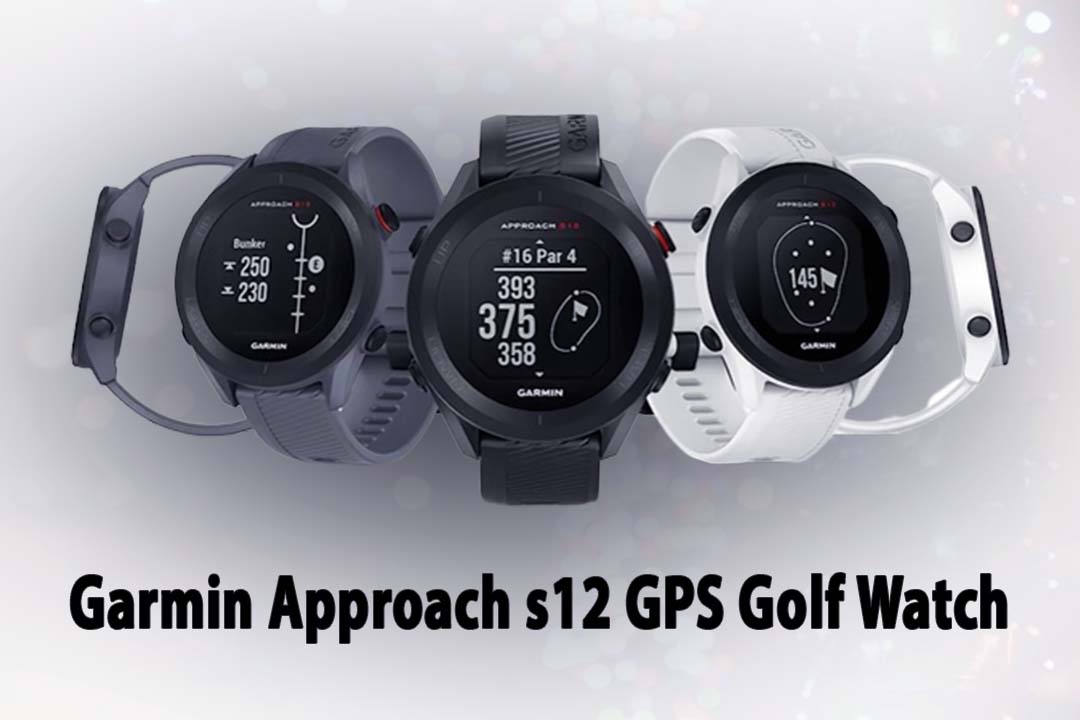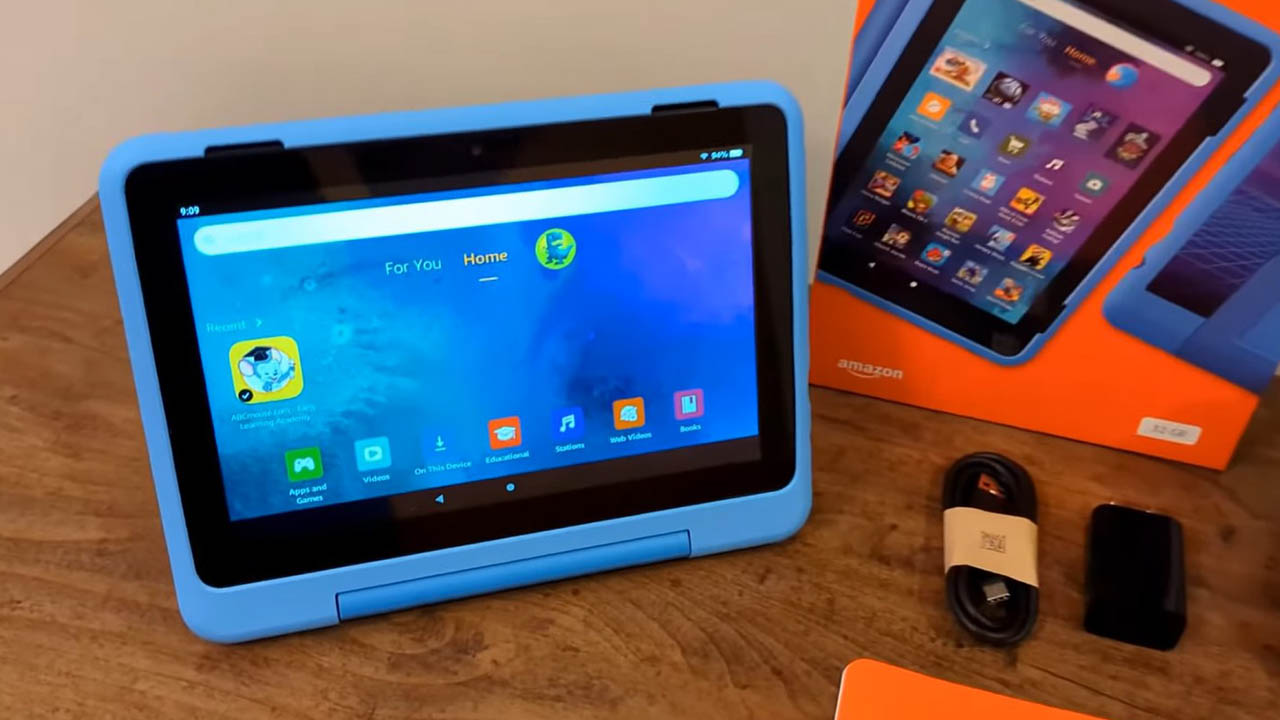Google Pixel 9 Pro Review: The First Flagship AI Phone
The Google Pixel 9 Pro is a landmark in the world of smartphones, marking the debut of the first flagship AI phone. This distinction means that AI isn’t just a supplementary feature but the core of the Pixel 9 Pro experience. From enhancing your photos to assisting with daily tasks, AI is woven into every facet of this device, creating an experience akin to living next to a grand theme park like Disney World.

Starting with the design, the Pixel 9 Pro is as meticulously crafted as a high-end amusement park. Every detail is refined, including the SIM card lid, which curves seamlessly to match the phone’s corner. The edges are smoothly polished, and the premium materials contribute to a sense of luxury and refinement that surpasses even the iPhone 15 Pro Max and Galaxy S24 Ultra. Holding the Pixel 9 Pro feels exceptionally smooth and satisfying, setting a new standard for phone design.
Using the Pixel 9 Pro is like embarking on an adventure through a high-tech amusement park. The new multi-modal Google Gemini AI is one of the most exciting features. It can analyze photos and answer questions based on what it sees, offering a level of interaction that feels almost magical. Gemini Live, another standout feature, provides a conversational assistant that helps brainstorm and generate ideas in a way that feels incredibly natural. The AI-driven photography features are equally impressive, delivering creative and nearly flawless results whether you’re capturing real-life moments or crafting imaginary scenes.
However, the AI experience can sometimes feel overwhelming. With every new feature, Gemini seems to be constantly asking if it can assist, whether you’re making a shopping list in Google Keep, checking your email in Gmail, or even making a phone call. The sheer volume of AI prompts can be a bit much, making it feel like there’s no escape from the constant presence of AI assistance.
Despite these minor inconveniences, the Pixel 9 Pro’s design and functionality are impressive. The phone is exceptionally well-designed, with thoughtful touches that make navigation straightforward for users of all ages. It’s not without its costs, though. The Pixel 9 Pro starts at $999 / £999 / AU $1,699 with a modest 128GB of storage, which feels a bit tight, especially if you rely on local storage. Google offsets this with a complimentary year of Google One AI Premium, providing 2TB of cloud storage and access to Gemini Advanced. This offer adds significant value and makes the Pixel 9 Pro a better deal compared to purchasing the service separately.
Even with its AI features sometimes feeling gimmicky, they remain engaging and entertaining. You can add yourself to group photos using the Add Me feature or create whimsical movie posters with Pixel Studio. The Gboard integration with Gemini allows you to transform mundane text messages into something more poetic, if not entirely Shakespearean.
However, the Pixel 9 Pro is not without its flaws. It suffers from heat issues, a recurring problem in the Pixel line. On a relatively mild sunny day, the phone overheated while taking photos, prompting a reduction in camera resolution to manage the heat. This raises concerns about the phone’s long-term reliability, especially given past issues with overheating in previous Pixel models.
The Tensor G4 chipset also disappoints. Its performance lags behind more recent competitors, such as the Galaxy S24 and iPhone 15 Pro. The Tensor G4 can feel sluggish, particularly when multitasking with several apps open. The delays experienced in these scenarios are reminiscent of long waits in a theme park line, detracting from the overall experience.
Despite these drawbacks, the Pixel 9 Pro is undeniably exciting. Its stunning design and powerful AI features make it a pleasure to use. It’s a phone that looks great, takes outstanding photos, and offers a glimpse into the future of mobile technology. The Pixel Recorder app has replaced other recording devices for meetings and interviews, and Gemini Advanced has simplified baking recipes. The Pixel 9 Pro might not be perfect, but its innovative features offer a taste of what the future could hold for smartphones, blending fun with practicality in a truly unique way.
Specifications
| Dimensions | 152.8 x 72 x 8.5 mm |
| Weight | 199 g |
| Display | 6.3-inch Super Actua display |
| Resolution | 1280 x 2856 |
| Refresh Rate | 1-120 Hz |
| Peak Brightness | 3,000 nits |
| CPU | Google Tensor G4 |
| RAM | 16 GB |
| Storage Options | 128 GB / 256 GB / 512 GB / 1 TB |
| OS | Android 14 |
| Cameras | 50 MP wide, 48 MP ultrawide, 48 MP 5X zoom |
| Selfie Camera | 42 MP |
| Battery | 4,700 mAh |
| Charging | 45W |
| Colors | Obsidian, Porcelain, Rose Quartz, Hazel |
Google Pixel 9 Pro – Design
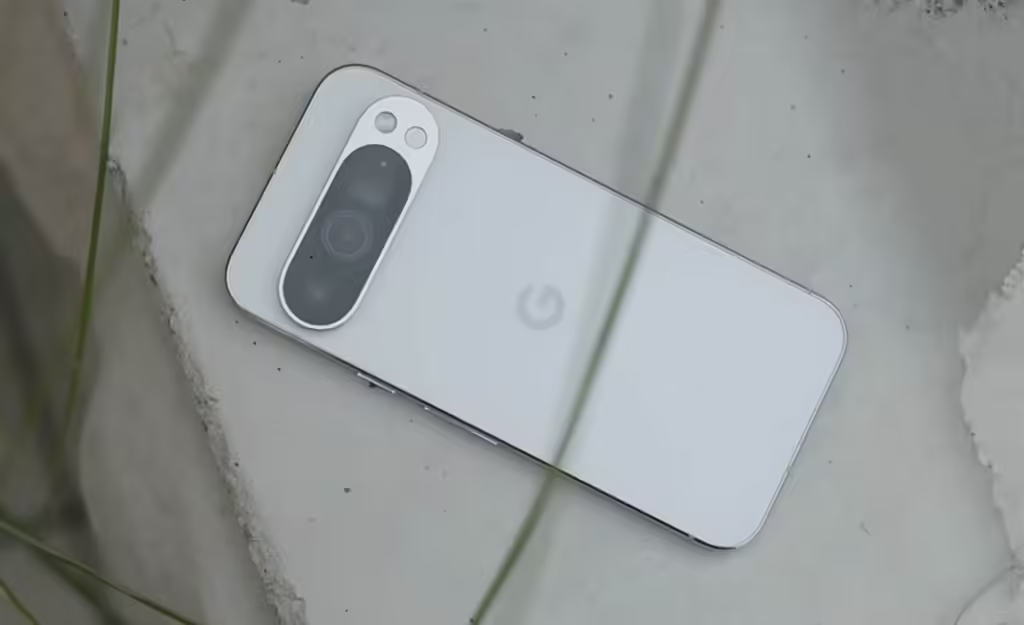
Google Pixel 9 Pro represents the most significant design overhaul since the Pixel 6’s debut in 2020. Its sleek and refined materials and finishes elevate the phone’s premium feel to new heights. From the moment you pick it up, it’s clear that this is a device crafted with meticulous attention to detail.
One of the first things you’ll notice is the Pixel 9 Pro’s exceptional smoothness. As you handle the phone, flipping it from side to side, you won’t find any sharp edges or rough spots. The device feels exceptionally pleasant to hold, surpassing even the iPhone 15 Pro in terms of tactile comfort.
While it may not boast the strikingly shimmering depth of the Galaxy S24 Ultra, the Pixel 9 Pro matches Samsung’s standards for material quality. The color options are well-chosen, complementing the matte glass and polished metal for a refined look.
The most surprising aspect of the Pixel 9 Pro is its size. With a 6.3-inch display, it’s considered small by today’s standards, but this is a welcome change for those with smaller pockets or hands who have long desired a high-end compact phone. This shift could potentially set a new trend in the smartphone market, offering a top-tier experience in a smaller form factor.
Comparatively, the Pixel 9 Pro stands out in a crowded market of large devices. For example, the iPhone 15 Pro, while nearly as capable as the iPhone 15 Pro Max, lacks certain features like the zoom lens camera and 3-axis image stabilization. The Galaxy S24 Ultra, on the other hand, is in a league of its own, with advanced camera capabilities and larger screen options, while the standard Galaxy S24 falls short in these areas.
Notably, the Pixel 9 Pro offers the same core features and performance as the Pixel 9 Pro XL, with the main differences being its smaller screen and battery. This consistency ensures that users aren’t sacrificing any functionality for the sake of size.
Google has also enhanced the durability of the Pixel 9 Pro, claiming it’s twice as robust as the Pixel 8 Pro. Although I didn’t test this claim directly, the phone’s design includes Gorilla Glass Victus 2 on the front and IP68 dust and water resistance. To preserve its pristine look, I opted to use the matching silicone case, avoiding any potential scratches or dings.
Google Pixel 9 Pro – Display

The Pixel 9 Pro has a 6.3-inch display, just like the Pixel 9, but it’s a step up in quality. It uses a Super Actua display, which has a higher resolution than the Pixel 9’s Actua screen, making everything look sharper and more detailed. The Pixel 9 Pro packs 495 pixels per inch, compared to the Pixel 9’s 422 pixels per inch.
One of the best things about the Pixel 9 Pro’s screen is its brightness. Google says it can reach up to 3,000 nits of peak brightness, though we measured it at 1,938 nits in normal use with adaptive brightness on. This is brighter than the Galaxy S24 Plus and iPhone 15 Pro, which reached 1,297 nits and 1,027 nits, respectively.
The Pixel 9 Pro also features a variable refresh rate that can adjust from 1Hz to 120Hz, depending on what’s happening on the screen. This helps with smooth scrolling and can save battery life.
When it comes to colors, the Pixel 9 Pro does well but isn’t as vibrant as some competitors. In its default Adaptive mode, it covers 121.4% of the sRGB color range and 86% of the DCI-P3 range. For comparison, the Galaxy S24 Plus in Vivid mode covers 140.3% of sRGB and 99.3% of DCI-P3, while the iPhone 15 Pro scores 117.8% and 83.5%, respectively.
Here’s a simple comparison of the Pixel 9 Pro’s display:
| Metric | Google Pixel 9 Pro | iPhone 15 Pro | Galaxy S24 Plus |
|---|---|---|---|
| Peak Brightness (nits) | 1,938 | 1,027 | 1,297 |
| Peak Brightness, HDR (nits) | 1,880 | 1,550 | 1,397 |
| sRGB Color Spectrum (Adaptive) | 121.4% | 117.8% | 140.3% |
| sRGB Color Spectrum (Natural) | 108.3% | – | 115% |
| DCI-P3 Color Spectrum (Adaptive) | 86% | 83.5% | 99.3% |
| DCI-P3 Color Spectrum (Natural) | 76.7% | – | 81.5% |
| Delta-E Rating (Adaptive) | 0.24 | 0.14 | 0.24 |
| Delta-E Rating (Natural) | 0.29 | – | 0.27 |
| Purchase Now | View Deal | View Deal | View Deal |
Google Pixel 9 Pro – Cameras
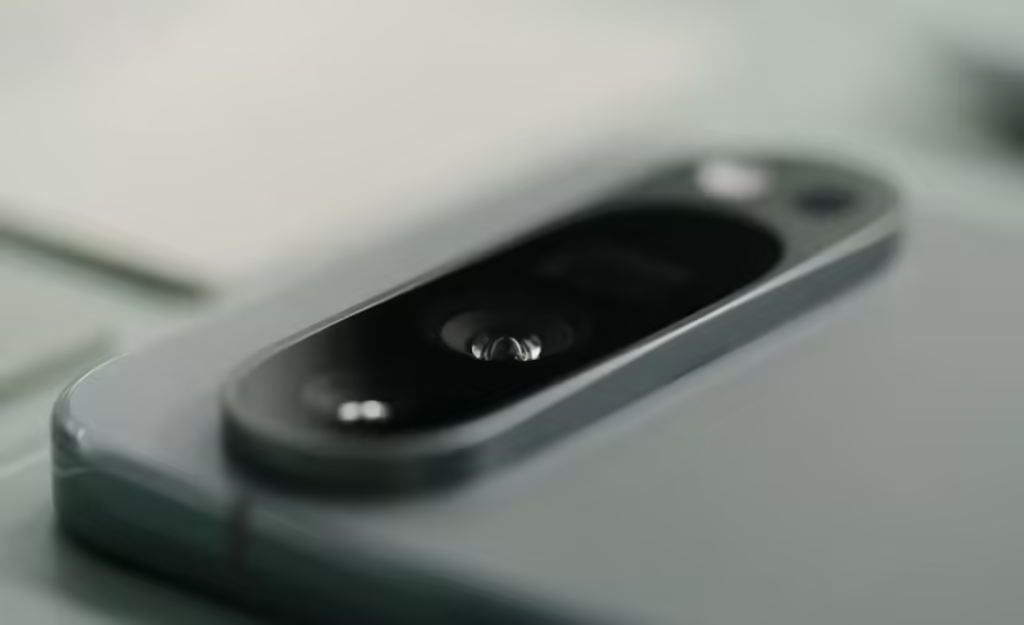
Google Pixel 9 Pro builds on its predecessor’s impressive camera system by incorporating several enhancements that elevate its photographic capabilities. While it shares the wide and ultra-wide sensors with the Pixel 9, the Pro version adds a 48MP telephoto sensor with 5x optical zoom and a significantly upgraded 42MP selfie camera. This expanded array provides users with a versatile set of shooting options, further refined by Google’s expertise in smart photography.
Main Camera Samples
The Pixel 9 Pro’s main camera boasts a 50MP sensor, which is binned to 12.5MP for optimal performance. This sensor, with a 1/1.31″ size and an f/1.68 aperture, is equipped with Laser AF, Optical Image Stabilization (OIS), and Electronic Image Stabilization (EIS). This setup allows the camera to capture wide scenes with excellent light sensitivity, vibrant colors, and impressive sharpness. Photos taken with this sensor tend to look natural, with balanced vibrance and accurate color reproduction. However, zooming beyond 2x can introduce noticeable noise, and even at 2x, some fine textures might exhibit minor imperfections.
Ultrawide Camera Samples
Complementing the main sensor is the 48MP ultrawide camera, which is also binned to 12.5MP. Featuring a 1/2.55″ sensor and an f/1.7 aperture, it provides a 123-degree field of view (FOV). This ultrawide lens offers a broader perspective, capturing more of the scene in a single shot. The integration between the main and ultrawide cameras is seamless, with consistent color and lighting across images. This harmonious transition makes it feel like you’re simply expanding your view rather than switching to a different, lesser-quality lens.
Zoomed Camera Samples
The standout feature of the Pixel 9 Pro is its 48MP telephoto sensor, which offers 5x optical zoom. This lens, with a 1/2.55″ sensor and an f/2.9 aperture, enhances the phone’s ability to capture distant subjects with greater detail. While the telephoto lens significantly improves upon the Pixel 9’s 2x zoom, it does face some challenges. The tighter aperture results in less light reaching the sensor, leading to slightly brighter images compared to the main and ultrawide sensors. This can introduce visible noise and occasionally result in slightly washed-out visuals, especially in highly zoomed-in shots. Although the Pixel 9 Pro’s telephoto lens performs well, it doesn’t quite match the 10x zoom capabilities seen in older models like the Samsung Galaxy S22 Ultra. Google’s Zoom Enhance photo editing tool can sharpen and increase contrast in zoomed-in photos, but it doesn’t fully replicate the quality of optical zoom.
Selfie Camera
The Pixel 9 Pro features an upgraded 42MP selfie camera with an f/2.2 aperture and a 103-degree FOV. This improvement offers sharper and wider selfies compared to the Pixel 9, capturing both the subject and their surroundings with enhanced clarity. The increased sharpness is particularly noticeable in fine details, making selfies look more refined under close inspection. While the Pixel 9’s selfie camera is still good, the Pro version’s enhancements make it stand out, offering truly impressive solo shots.
Pixel 9 Pro – “Add Me” Tool
The Pixel 9 Pro introduces several AI-powered features to further enhance its photography capabilities. One notable tool is the “Add Me” feature, which stitches together two photos to create a composite image. This feature requires a steady hand to keep the phone framed correctly between shots, but it effectively merges images for a cohesive final result. Additionally, the Panorama mode links a series of photos to create wide-angle shots, though it sometimes struggles with moving objects and people, leading to occasional errors.
The photo Magic Editor now includes a “Reimagine” feature, which allows users to transform selected objects into something entirely different. While the feature did not successfully turn a lake into lava, it performed well when altering a statue into the Stanley Cup, demonstrating its potential for creative editing.
The Pixel 9 Pro also benefits from more nuanced control over its cameras with the Pro mode, which was introduced in the Pixel 8 Pro. This mode allows for manual lens selection and focus, offering greater flexibility for advanced photography. Although the Pro mode can be somewhat finicky, with lens selection often being buried within the settings, it provides valuable control for those who want to fine-tune their shooting experience.
Video Recording Features
For video enthusiasts, the Pixel 9 Pro offers additional features, though they come with some trade-offs. The Video Boost feature, exclusive to the Pro models, extends beyond the camera’s 4K limits but requires the footage to be processed, resulting in recorded video at 1080p initially. This processing delay can be a drawback compared to direct 4K HDR recording available on the device. On a more promising note, Night Sight for video significantly enhances low-light recordings by reducing graininess and improving overall quality. The dual exposure feature on the main sensor also helps to brighten dark scenes effectively.
Google Pixel 9 Pro – Software

The Google Pixel 9 Pro was launched earlier than usual this year, arriving with the Android 14 operating system, which is the same as the Pixel 8. While this isn’t necessarily a bad thing, it does mean there’s less to be excited about in terms of new software. However, Google’s commitment to providing 7 years of OS and security updates ensures that the Pixel 9 Pro will eventually get Android 15 and, theoretically, could see a future Android 21 (though Android 22 might be out of reach). The software on the Pixel 9 Pro is smooth and effective, delivering a stylish and polished interface. However, I wish Google would focus more on maximizing screen space for information rather than prioritizing aesthetics, but the rounded Android styling does blend nicely with the curves of the phone and screen.
What stands out more than the operating system itself is the suite of AI tools that Google has made a focal point of the Pixel 9 Pro. One of the key additions is the Screenshots tool, which analyzes screenshots stored on the device and provides insights when queried by users. This tool is useful but far from flawless, with varying degrees of accuracy depending on the complexity of the query.
Another significant feature is Gemini, which takes over many of the functions previously handled by Google Assistant. Gemini introduces AI-generated responses to some queries, with Gemini Live being the most notable addition. This feature is specific to the Pro models and comes as part of the Gemini Advanced subscription, which is included free for one year with the Pixel 9 Pro. Gemini Live allows for spoken conversations with Google’s AI, offering a more interactive experience. However, it’s worth noting that this feature can be a bit complex and sometimes even frustrating to use.
During my time with Gemini Live, I found it an intriguing, if occasionally flawed, substitute for traditional Google search. It could pull up details about products and even provide additional information that might be useful. However, it was also prone to errors. For instance, when I asked about the Pixel 9 Pro’s camera specs, it incorrectly told me that the phone had a 12MP telephoto camera. When I corrected it, it apologized and provided the correct information. But when I asked why it had given me the wrong information initially, it responded by asking where I had heard that the Pixel 9 Pro had a 12MP camera, leading to an unproductive exchange. In many cases, Gemini Live would start talking and then abruptly stop, leaving me unsure if something had gone wrong. While ambient noise might have been a factor, the feature didn’t cut off as quickly when I interrupted it myself. The lack of visual cues in the application makes it difficult to diagnose these issues, and it’s unclear where the boundary lies between on-device processing and web requests. For example, when I asked if the AI worked offline, it responded that it could to some degree but wouldn’t open if the Pixel 9 Pro was in Airplane mode.
Interestingly, despite being advertised as English-only, Gemini Live spontaneously switched to Japanese during my testing, likely due to one of my Google account’s language settings. It responded to questions posed in either English or Japanese and continued in Japanese until I asked it to switch back. This ability to toggle between languages was seamless, although somewhat unexpected. At one point, the AI claimed it was a third-year high school student, but when I asked its age, it admitted it didn’t have one because it is an AI, demonstrating a quirkiness that was more amusing than practical.
The Screenshots tool is designed to act as a repository of data that Google’s AI can sift through for answers. While it sometimes succeeded, the results were inconsistent. For example, when I asked how many work shifts my girlfriend had in September based on a screenshot of my calendar, it overcounted by including dates from October. Additionally, asking the same question multiple times could yield different answers, as the AI sometimes misidentified other events as work shifts or ignored labeled shifts entirely. When I inquired about a funeral scheduled in my calendar, the AI presented me with the wrong date, despite there being only one such event listed.
In an attempt to replicate Google’s Pixel 9 launch demo of Gemini, I took a picture of event details and asked Gemini to check my calendar for availability. In one instance, it assumed I was attending all three events in the photo and incorrectly reported that I looked busy that day. When I rephrased the question to be more specific about checking my calendar for availability, the AI simply stated that it couldn’t help and suggested I check the calendar app instead. This feature’s failure to function properly was reminiscent of Google’s demo, where the tool didn’t work as intended on a Samsung device, suggesting that these issues are not limited to the Pixel 9 Pro.
Pixel Studio, Google’s image generation tool, also left something to be desired. The generated images were often off the mark, the processing time was lengthy, and the tool doesn’t work offline. This raises questions about the role of the phone’s on-device AI capabilities, especially when so many features seem to rely on cloud processing.
Google Pixel 9 Pro – Battery Life & Charging

Google Pixel 9 Pro brings significant improvements in battery life, largely thanks to the more efficient Tensor G4 chip. Although the Tensor G4 hasn’t made a substantial leap in benchmarking compared to the Tensor G3, its efficiency gains are evident in the phone’s impressive battery performance.
In our proprietary battery test at BongoInfo, where a fully charged device continuously surfs the web over a cellular network until the battery runs out, the Pixel 9 Pro delivered an outstanding result. The phone lasted 13 hours and 18 minutes with the Smooth display adaptive refresh rate enabled, which is nearly four hours longer than the Pixel 8’s 9 hours and 43 minutes. This marks a remarkable improvement, making the Pixel 9 Pro one of the top performers in terms of battery life among flagship smartphones.
To put it in perspective, the Pixel 9 Pro outlasts the iPhone 15, which managed 11 hours and 5 minutes, and falls just 10 minutes short of the Samsung Galaxy S24’s 13 hours and 28 minutes. While the Pixel 9 Pro’s larger 4,700 mAh battery plays a role in this extended life, the efficiency of the Tensor G4 is likely the key driver behind the boost in battery performance.
As for charging, Google hasn’t increased the charging speed from the Pixel 8, keeping it at 27W. However, due to the larger battery, the Pixel 9 Pro charges slightly more slowly, reaching 54% after 30 minutes compared to the Pixel 8’s 60%. This is still in line with the Samsung Galaxy S24’s charging rate and a bit faster than the iPhone 15, which reaches 53% in the same time.
Google Pixel 9 Battery Life Test Results
| Google Pixel 9 | Google Pixel 8 | Samsung Galaxy S24 | iPhone 15 | |
|---|---|---|---|---|
| Battery size | 4,700 mAh | 4,575 mAh | 4,000 mAh | 3,349 mAh |
| Battery Life (Hrs) | 13:18 | 9:43 | 13:28 | 11:05 |
| Charging Speed | 27W | 27W | 25W | 20W |
| Charge % after 30 minutes | 54% | 60% | 54% | 53% |
The Pixel 9 Pro’s improved battery life and solid charging speed make it a standout in the Pixel lineup, addressing one of the series’ longstanding weaknesses. Google’s focus on efficiency with the Tensor G4 has clearly paid off, providing users with a more reliable and long-lasting device.
Google Pixel 9 Pro – Performance
The Google Pixel 9 Pro’s performance has raised concerns, particularly regarding its Tensor G4 processor. If you were worried about the Tensor G4’s capabilities, those fears might be justified. Comparing the Pixel 9 Pro to competitors like the Galaxy S24 and iPhone 15, it’s clear that the Pixel 9 Pro lags behind in raw power.
In our Future Labs benchmark tests, the Pixel 9 Pro’s performance was notably subpar. The Geekbench Multicore test, which evaluates the phone’s ability to handle multiple processing tasks simultaneously, returned an average score below 4,800. In contrast, the Galaxy S24, powered by the Qualcomm Snapdragon 8 Gen 3 for Galaxy chipset, averaged over 6,900. This substantial difference highlights the Pixel 9 Pro’s performance shortcomings.
The performance gaps extend beyond benchmarks into real-world usage. The Pixel 9 Pro struggles with gaming, video processing, and other demanding tasks. While no single application caused the device to choke, multitasking reveals its limitations. Running multiple apps simultaneously—such as Spotify, Waze, and Gemini—can cause the Pixel 9 Pro to freeze. During such instances, the screen becomes unresponsive, and even simple tasks like scrolling through a music playlist can experience significant delays.
This sluggish performance raises questions about the device’s future-proofing. Despite the Pixel 9 Pro boasting an impressive 16GB of RAM, the phone’s multitasking capabilities appear inadequate. Users might worry that this high RAM might not translate into smooth performance now or in the future.
Additionally, the Pixel 9 Pro has shown issues with heat management. On a relatively mild day with temperatures around 79°F (26°C) and after light rain, the phone overheated while taking photos. The device struggled with maintaining camera performance, forcing a reduction in camera resolution, while both the Pixel 9 and iPhone 15 Pro Max handled the same conditions without issues.
Google Pixel 9 Pro – Price and Availability
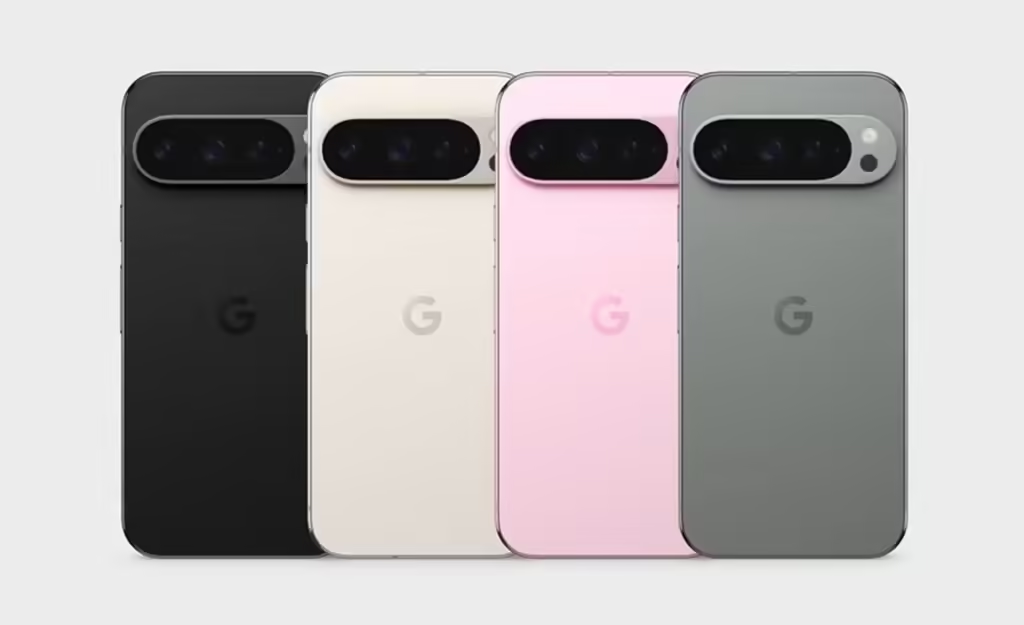
The Google Pixel 9 Pro starts at $999 / £999 / AU$1,699 for the 128GB storage option. Given its advanced features, you might want to consider opting for more storage if you plan to record a lot of videos. Google offers a year of Google One AI Premium with the purchase of a Pixel 9 Pro or Pro XL, which includes 2TB of cloud storage and Gemini Advanced access. This offer enhances the value of the Pixel 9 Pro, though it would have been beneficial if it extended to the Pixel 9 as well.
The Pixel 9 Pro is available in several attractive colors: Rose Quartz, Hazel, Porcelain, and Obsidian. However, the Rose Quartz option is limited to the 256GB storage variant or lower in some regions, while the 1TB model is only offered in Obsidian and is available exclusively in the US.
If the initial price feels high, keep in mind that previous models, like the Pixel 8 Pro, saw significant discounts shortly after launch. The same is likely for the Pixel 9 Pro, potentially starting in November.
Despite its excellent design and durability, the Pixel 9 Pro’s performance issues and potential heat problems might not justify its high price, especially compared to competitors like the Apple iPhone 15 Pro. However, securing a good deal, such as a free storage upgrade or a bundle with Pixel Buds Pro, could make the Pixel 9 Pro a more appealing choice.
| Storage | US Price | UK Price | AU Price |
|---|---|---|---|
| 128GB | $999 | £999 | AU$1,699 |
| 256GB | $1,099 | £1,099 | AU$1,849 |
| 512GB | $1,219 | £1,219 | AU$2,049 |
| 1TB | $1,449 | £1,449 | AU$2,399 |
Verdict
The Google Pixel 9 Pro is a worthy successor to the Pixel lineup, offering a compelling mix of hardware and software improvements. Its strengths lie in its exceptional camera performance, AI-driven features, and long-term software support. While it may not be the fastest phone on the market in terms of raw performance, the Pixel 9 Pro’s emphasis on AI and machine learning makes it a unique offering in the crowded flagship market.
The design, display, and battery life are all solid improvements over previous models, and the new software features add real value to the user experience. However, the Pixel 9 Pro is not without its flaws—chief among them being the high price tag and the fact that it lags behind competitors in terms of processing power.
For those who prioritize camera quality, AI features, and a pure Android experience, the Pixel 9 Pro is an excellent choice. But if you’re looking for the best performance in gaming or heavy multitasking, you might want to explore other options. Overall, the Pixel 9 Pro is a strong contender in the flagship smartphone market, and its unique strengths make it a device worth considering.


